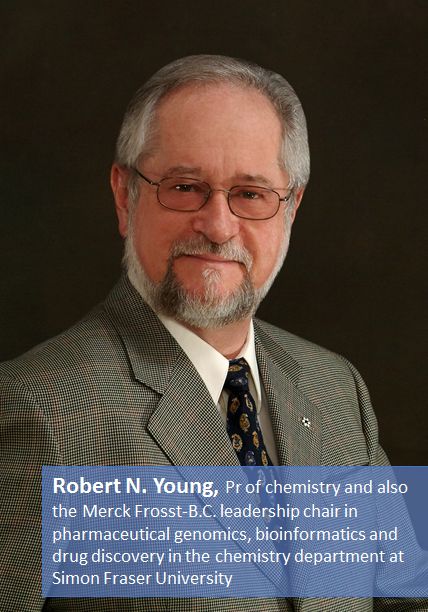(AUDIO-EN) Prostaglandins and Osteoporosis: A 20 Year Odyssey
(Montreal) Robert N. Young is a professor of chemistry and also the Merck Frosst-B.C. leadership chair in pharmaceutical genomics, bioinformatics and drug discovery in the chemistry department at Simon Fraser University. His industrial career is focused on the design and synthesis of novel drugs for asthma, inflammation and osteoporosis. He is most noted for his part in the discovery of the asthma drug, Singulair and the anti-inflammatory drug Arcoxia. On March 29th 2016, he gave a distinguished lecture at the NEOMED Institute in Saint-Laurent, Montreal Quebec titled: Prostaglandins and Osteoporosis: A 20-Year Odyssey. In this recording, Professor Young summarizes what brought him to study the role of prostaglandins in osteoporosis and bone biology. “During my early work at Merck Frosst, we focused our interest in bone biology,” he explains. “We then realized that a major need was to find compounds to stimulate bone to grow or regrow after it is lost in the disease osteoporosis. And there are very few drugs for that.” He talks about his current work and his most important collaborators through the past two decades. “A lot of people were involved over time, in particular Gideon Rodan who was probably the most renowned bone biologist in the world. He was our mentor for many years.” Professor Young then discusses future work, timeline and milestones up ahead. The guest of this edition of NEOMED’s Distinguished Lecture Series is the author of more than 200 publications, articles and patents. He has received many prizes and distinctions: the Order of Canada, Fellow of the Royal Society of Canada, the Chemical Institute of Canada and the Canadian Society of Pharmaceutical Sciences, Prix Galien, “Heroes of Chemistry” Award (American Chemical Society), Genome BC Leadership Award, and Health Research Institute Medal of Honour. He was the President of the Canadian Society for Pharmaceutical Sciences from 2012 to 2013.
